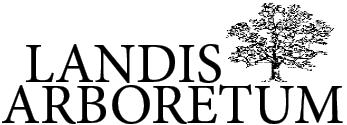Native plants are adapted to the local climate and soil conditions where they naturally occur. In addition to supporting pollinators and other wildlife, native plants are inherently sustainable because they require less watering and fertilization than most non-natives. At Landis, we rely completely on Mother Nature to supply rain, so native plants are a great fit. Looking at the vast variety of blooming wildflowers in fields and along roadsides, it may seem difficult to choose which of these natives to grow in a garden.
There are many that might complement your site.

For example, a great spring bloomer is Baptisia australis, blue false indigo. A perennial that grows into a small rounded shrub-like shape of 3’x3’ and produces stems lined with indigo flowers, the Baptisia is not only unique in flower color, but also important for native bees. In fall, large brown seed pods develop on the stems and create a fun rattle sound when shaken, a child’s delight!
Asclepias tuberosa, butterfly weed, is one of the prettiest native plants, boasting long lasting blooms of bright orange flowers that attract the monarch butterfly throughout its life cycle. One thing to note is this plant is very late to come up in the spring, and without marking its location, you can easily mistake it for a weed. It is very easy to grow and extremely low maintenance, a true joy in any garden, especially when the monarch butterfly stops by!
A few other lovely native plants are Monarda fistulosa, bee balm, which has lavender flowers and can grow in shady areas while tolerating most soil conditions. Also of interest are Lobelia siphilitica, great blue lobelia, and its relative, Lobelia cardinalis, cardinal flower. Great blue lobelia is pollinated by bees that often sleep inside the flower buds, giving it the name “honey bee hotel.” The cardinal flower is one of the truest red flowers found in the plant kingdom and dependent on the ruby-throated hummingbird for pollination, another plus for having it in your garden!
There are plenty of fall blooming native plants to enjoy, such as varieties of Asters and Heleniums. Often self-seeders, these plants can easily be pulled out if they are found growing in undesirable spaces, though they are an important late season food source for bees and other insects.
As the work in the garden continues this season, one thing is sure: we really enjoy getting together at the Arboretum and talking plants. Cheers to a great crew of volunteers -- and to native plants in the garden!
